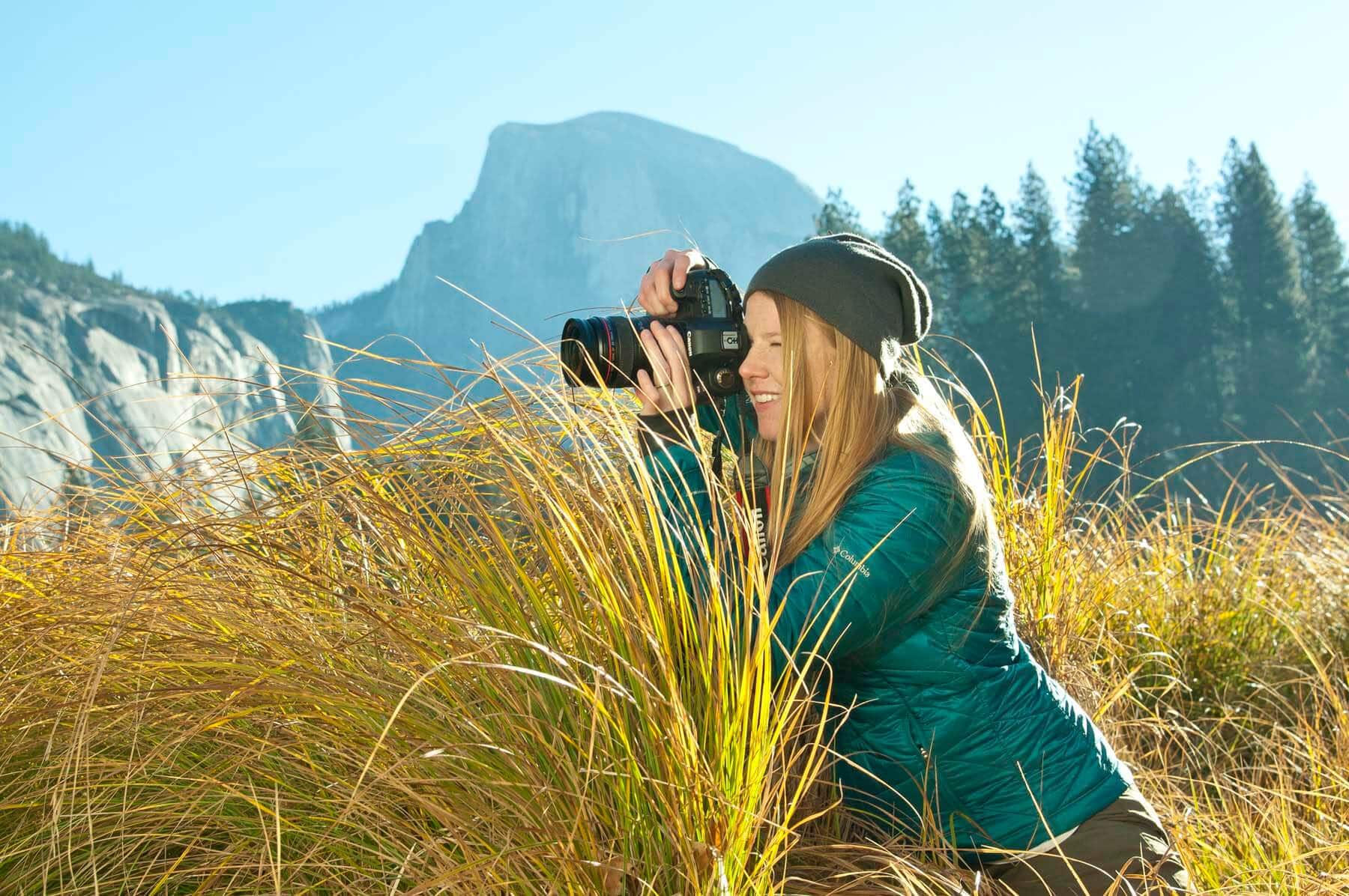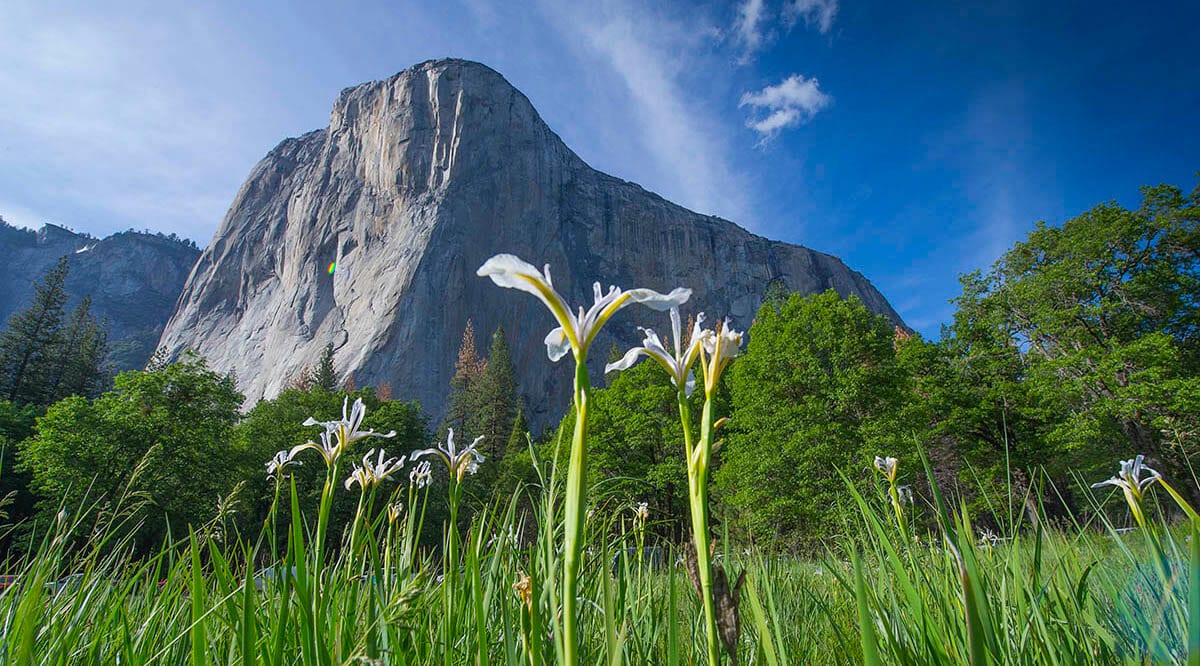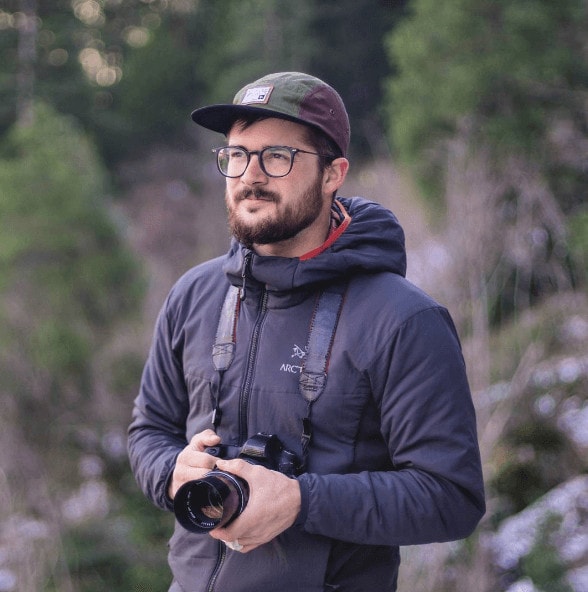It isn’t hard to find great places to shoot photos in Yosemite National Park and Yosemite Mariposa County. There is nowhere else in the country that offers such a concentration of towering trees, imposing rock cliffs and waterfalls — plus, it has great light and serenity that makes it easy to get take it all in.

Must-Visit Photography Spots in Yosemite
Yosemite is one of the most photographed locations in the world. As you explore Yosemite National Park, you will see vistas that are nothing short of iconic It’s recommended that you visit in the warmer months due to accessibility issues. Hope for a cloudy day to add depth. If you want more views of El Capitan or you’d like a shot of Cathedral, go to El Capitan Meadow, where you can see some of the beginnings of spring. The light here is best in morning or evening.
Go Off the Beaten Path for the Best Yosemite Pictures

While you can try to replicate some famous favorites, don’t be afraid to go off the beaten path to go get the Yosemite pictures you’re hoping for. While you won’t be able to visit points past Tioga Pass (it is often closed in winter), there are hikes throughout the park and Yosemite waterfalls to photograph. Find your own vantage point or explore less trafficked areas. For instance, when you visit Yosemite Falls, try taking a picture of the swinging bridge or from the water instead of just the falls themselves. Also, be sure to check out our Yosemite Fall Photography Guide.
Yosemite Winter Photography
One of the best times to photograph in Yosemite is during the winter. From January through March, there are fewer crowds and the chance of fresh snow or frost. You can also enjoy certain natural phenomenon that you won’t find anywhere else. There are lunar rainbows at the base of Yosemite Falls when you visit on a full moon night and there is the Horsetail Fall – more commonly known as the natural Yosemite firefall. At sunset, the seasonal waterfall can glow like falling fire for as long as 10 minutes daily. It only happens during the winter when the snow melts and lasts for up to three weeks. If you come just after the snows melt, you may also find blooming wildflowers and dogwood throughout Yosemite Valley.
Best Light Conditions for Yosemite Pictures

Winter in Yosemite makes for intense light. In fact, some of Ansel Adams‘s most iconic photographs were shot during this time of year, but there are some things you should know before shooting Yosemite photos in winter. “Yosemite Valley faces toward the west so it is typically more of an afternoon/sunset location, but great photos can be made all day if you read the light,” advises Shutterbug. “Just remember that Half Dome faces the setting sun, so if you want the ‘classic’ Half Dome shot, be ready at dinner time.”
Normally, the setting sun strikes Bridalveil Fall or El Capitan. However, there are some exceptions. The Vernal Equinox (roughly March 22) changes the orientation of the sunset. During the time when the hours of daylight and nighttime become equal, the setting sun goes up Yosemite Valley, striking both Bridalveil Fall and El Capitan.
Yosemite is a perfect destination for winter photography. The light changes in big ways throughout the day and the winter weather makes for some very special shots. Pack your telephoto lens, a tripod and a headlamp for traveling on foot after sunset.
